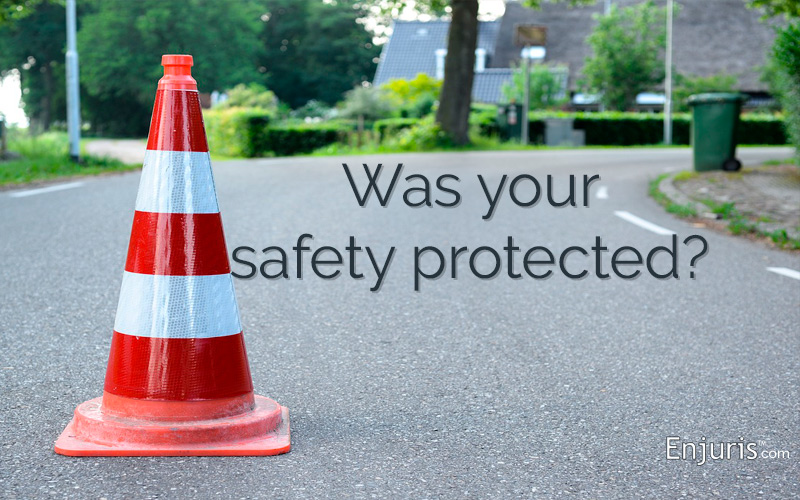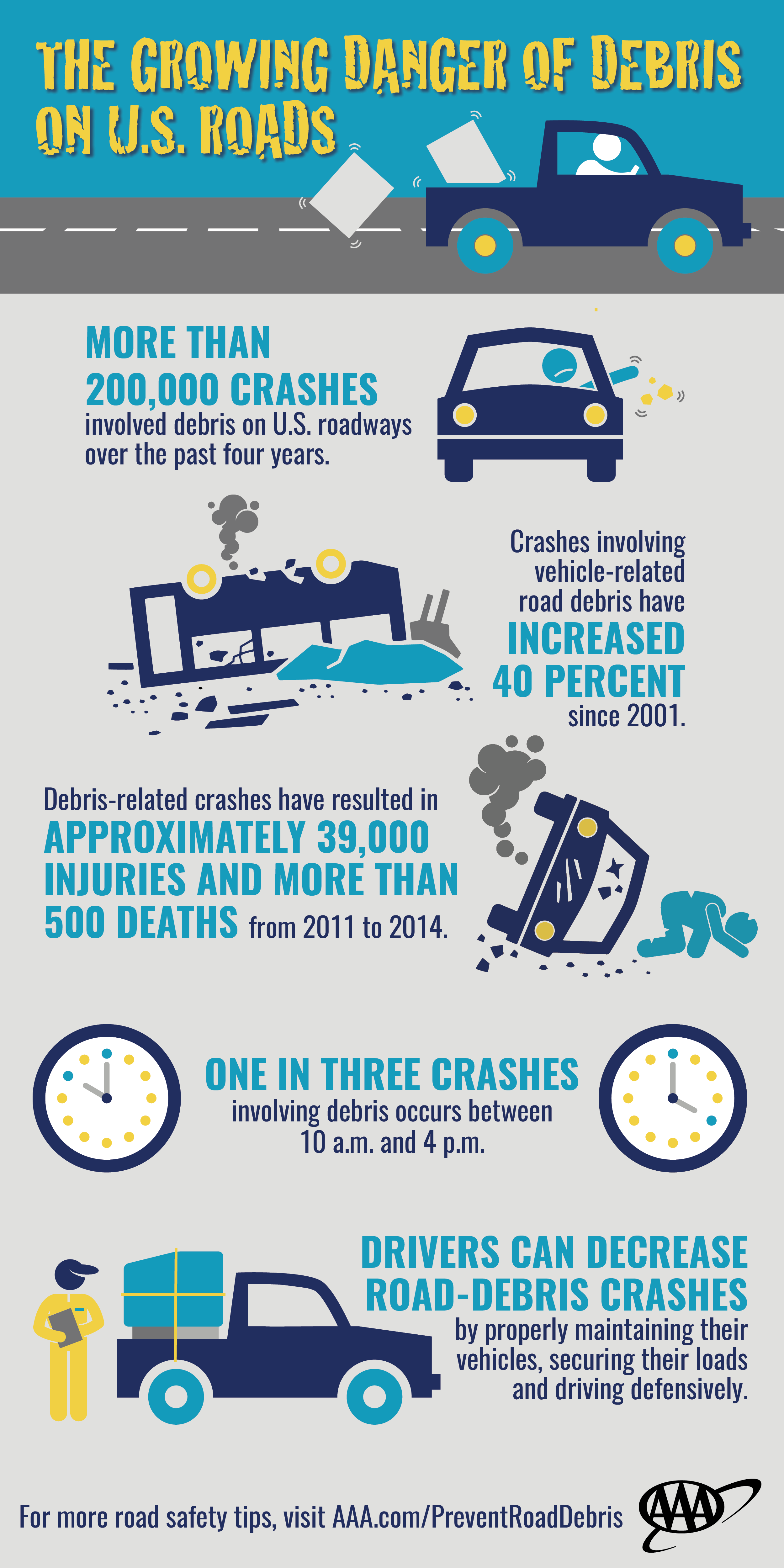What happens when you can’t avoid a dangerous condition in the road?
It’s a terrifying experience if you sense a car accident is about to happen but can’t do anything to stop it. There may be a dangerous object or road defect ahead of you that you simply can’t avoid. The accident may leave you with injuries, medical bills and other financial concerns. Take comfort in the fact that Georgia allows you to seek damages from the party responsible for your accident.
Types of road defect accidents
Road defect accidents encompass many different forms of auto accidents. In short, there’s a hazard or unsafe road condition that causes an accident. Examples of accidents with dangerous road defects include:
- Dangerous curves
- Insufficient lighting
- Poor water drainage
- Construction hazards
- Faded lane markings
- Cracked, uneven or crumbling asphalt or cement resulting from the environmental wear, accidental damage or the use of inferior materials during construction
- Improperly placed or missing road signs
- Narrow or inadequate shoulders
- Lack of reflective markers
- Missing guardrails
- Failure to maintain traffic flow
- Deficient paving
- Insufficient warning to defects or construction sites
All of the above make it difficult for a driver, cyclist or motorcyclist to maintain their safety. As a result, the party responsible for the hazard can be sued to recover financial compensation.
Accident victims may not realize that they have a claim for their car accident in many of the above situations. If you believe that a road defect or dangerous road condition caused your accident, an experienced accident lawyer will help you analyze your potential claim.
Statute of limitations in Georgia
Most road defect lawsuits involve a government entity. Typically, the city or branch of the state or federal department of transportation is responsible for maintaining highway safety. As a result, both the procedure for filing the claim and the timeframe differ from other car accident claims. Paperwork must be filed according to the rules below:
In Georgia, you must file your personal injury claim according to these deadlines:
- With a city road, the deadline is approximately 6 months after the accident.
- If the accident occurred on a state highway, the deadline is approximately 1 year after the incident.
- If your accident took place on the interstate or other federal road, you must file an administrative claim with the responsible government department within 2 years of the accident. If your claim is denied, you have 6 months after the rejection to pursue legal action in court.
Understanding which division of the government to sue may be confusing. The most important fact to remember is that the clock starts running as soon as your accident occurs. The sooner you meet with a car accident attorney, the better.
Road debris accident claims
Road debris is a dangerous road condition that’s similar to a road defect. Both are hazards that may cause sudden accidents involving cars, bicycles and motorcycles. As a result, both road debris accidents and road defect claims are negligence claims that award accident survivors damages.
Road debris could be anything that falls off or out of a car or truck. Tires, unsecured cargo from either personal or commercial vehicles, and disengaged trailers are examples. Though this may seem to be a rare occurrence, the Automobile Association of America (AAA) reports 200,000 crashes and 500 deaths connected to road debris from 2011 to 2014. Though some accidents occur with the debris hitting the car, others are a result of the driver swerving to avoid the road hazard.
Victims of road debris accidents can sue anyone connected to the fallen item. These include the car owner, the company who was hauling the loose material, a moving company, etc.
Tweet this
In many cases, road debris collisions cause a chain reaction of car wrecks. You may file a personal injury claim against the driver who caused the accident in addition to whomever caused the debris. Be sure to consult a car accident attorney if you have a road debris claim in order to properly identify all of the defendants who may be responsible for damages.
Image source:
https://exchange.aaa.com/wp-content/uploads/2017/05/Road-Debris-and-Crashes-Infographic-1.png
How to win a road defect or road debris lawsuit
Road defect lawsuits are classified as negligence claims. All negligence claims have the same 4 criteria that must be satisfied in order to recover damages:
1. Duty
First, the plaintiff must prove that road maintenance workers, the construction team, or anyone else responsible for maintaining the safety of the road owed a duty to you. This is an easy criteria to satisfy unless you were trespassing.
2. Breach of duty
Next, the plaintiff must prove that the party responsible for maintaining the roadway, either a government entity or private party, had a duty to correct a dangerous road defect, warn other drivers about the hazard and/or otherwise maintain the road. Here again, as long as the defect wasn’t a sudden or abrupt change in the road, such as tree or rocks suddenly falling on the highway, this criteria is pretty easy to satisfy.
3. Causation
The plaintiff must prove that the breach of duty directly caused the accident. This element can be tricky to satisfy as this is where fault comes into play. For example, if a large pothole was in the road, should you have seen it in advance and driven around it? Were you a distracted driver?
As your claim may need evidentiary support such as witness testimonies, photographs of the defect or debris, and accident reconstruction, road defect cases often requires the expertise of a personal injury attorney.
4. Harm
Finally, either you or your vehicle must have sustained damage as a direct result of the road defect or hazardous condition. Items such as your medical bills, employment papers or car repairs bills will help you prove your case.
If all 4 elements are satisfied, a judge or jury will decide the case in your favor. As a result, you will be awarded damages to cover the costs of your accident.
It’s worth noting that a road debris claim may be easier to win as these claims typically don’t involve a government entity. As mentioned, road defect claims are against whichever section of the government is responsible for maintaining the safety of the road. Government bodies often have limited liability, but you can still prevail in a negligence claim.
How to prevent accidents with road debris and road defects
AAA provides the following safety tips to help prevent and reduce the severity of accidents with road defects and road debris:
1. Drivers and motorcyclists should search the road ahead at least 12 to 15 seconds for debris and other potential road hazards.
2. Don’t get distracted by your phone, GPS or other passengers, especially if there’s a hazard in the road.
3. Don’t tailgate! By leaving at least 3 to 4 seconds of following distance between you and the vehicle in front of you, you can see potential dangers in the road ahead easier.
4. If you see you’re about to make contact with debris or road defect, safely reduce your speed as much as possible prior to making contact. Consider turning your hazards on to alert other drivers of a possible threat.
5. When driving in low visibility, such as hazardous weather or night driving, be especially alert for animals, debris and defects on or near the roadway.
6. Lastly, always be aware of open space around your vehicle. Drivers should try to maintain open space to the front and at least one side of their vehicle at all times. If it’s safe, a driver can steer into that open space to avoid contact with an object.
See our guide Choosing a personal injury attorney.



